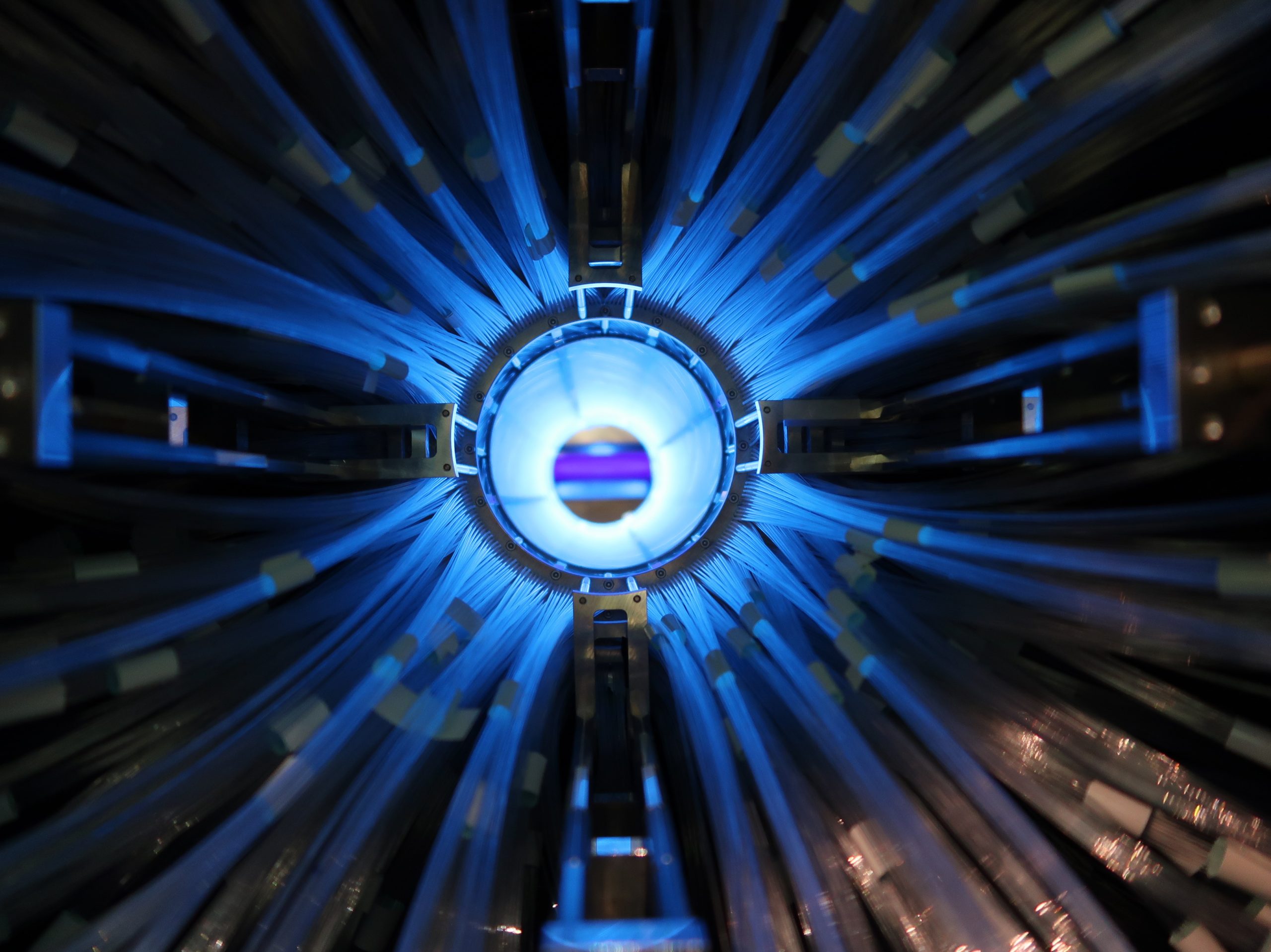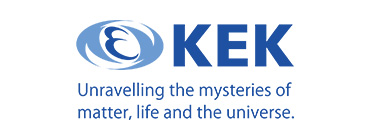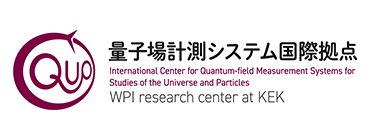- Topics
Masato Aoki of IPNS-EF Group Receives Outstanding Achievement Award — Achieving High-Precision and Stable Particle Detection in the ATLAS Experiment
July 1st, 2025
-
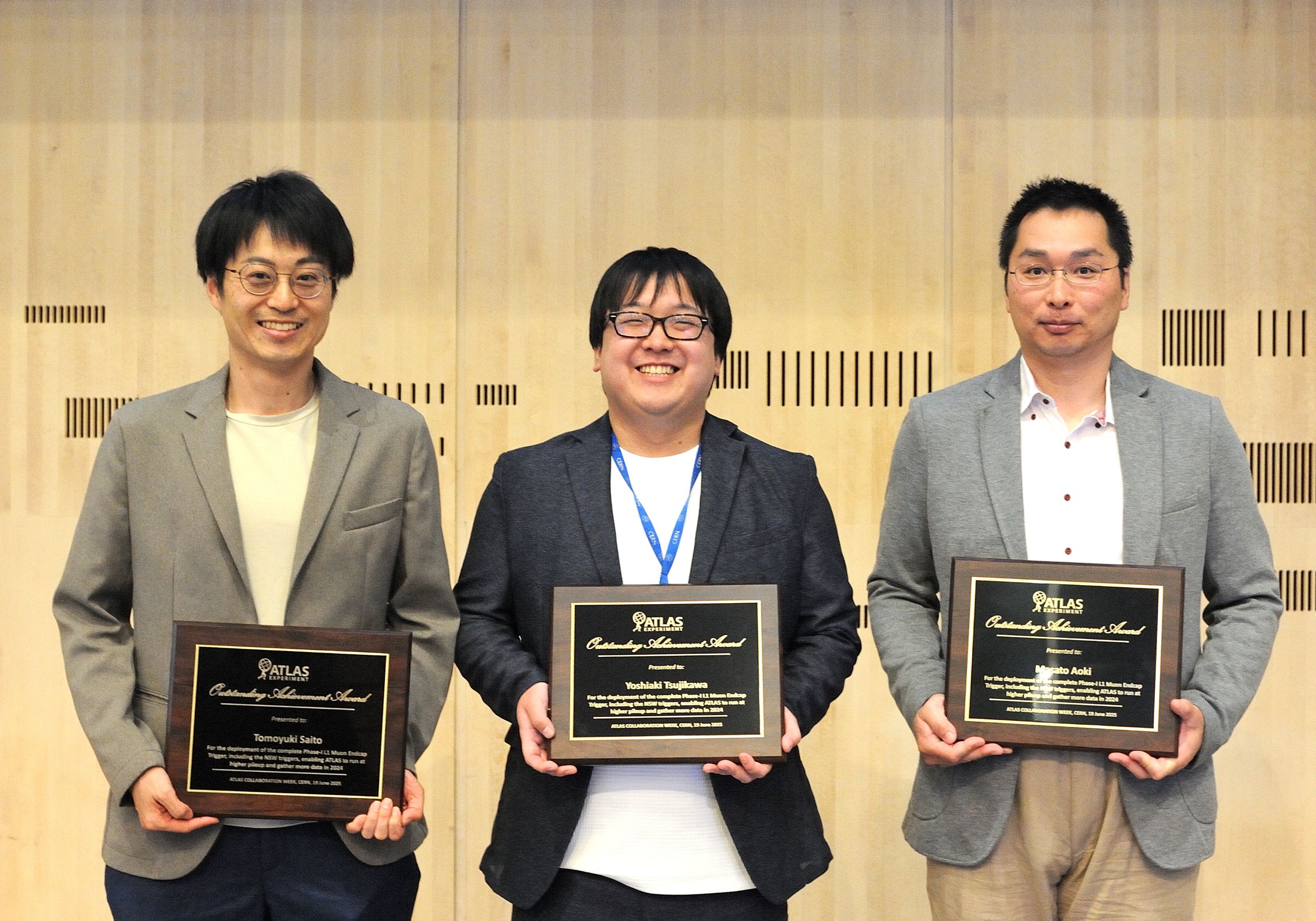
At the award ceremony: Among the 12 awardees, three are from Japan. Mr. Aoki is on the right.
The 8th Outstanding Achievement Award ceremony was held on June 19th during the ATLAS Collaboration Week meeting at CERN. This award is presented to recognize outstanding technical achievements to the ATLAS experiment. Nominations come from various activities such as technical coordination, detector systems, upgrades, combined performance, and outreach.
This time, notable contributions to the muon trigger system in the ATLAS experiment were highly praised, and Associate Professor Masato Aoki, KEK-IPNS Energy Frontier Group, along with 12 international collaborators, received the award.
The award acknowledges the team’s achievements in significantly reducing false signals (false triggers) through the advanced integration of the TGC (Thin Gap Chamber) forward muon detectors, which Japan has led in developing and operating, and the newly introduced NSW (New Small Wheel) detectors developed collaboratively by multiple countries and implemented in 2021. This integration has enabled the ATLAS experiment to continue stable operation even under high-luminosity beams. In the ATLAS experiment, hundreds of millions of particle collisions occur every second. Since it is impossible to record all of them, a system is needed to instantly select and record only significant events. This is the role of the “trigger” system, which identifies collisions worth recording with high speed and precision.
When LHC Run 3 began in 2022 and the new trigger circuits for the TGC were introduced, Dr. Aoki thoroughly verified that the TGC’s triggering functioned as designed, ensuring stable data acquisition from the early stages of operation. rom 2023 onward, as the LHC’s beam collision performance (luminosity) further increased, the rapid rise in false triggers caused by background events became a major challenge for the ATLAS experiment. To address this, a new method was introduced wherein a trigger is issued only when both the TGC and NSW detect a signal simultaneously. This enabled a more reliable trigger decision system that responds only to genuine muons.
In implementing this new method, Dr. Aoki enhanced and reinforced the monitoring functions for timing synchronization and signal matching between the TGC and NSW. He also worked closely with researchers from the countries involved in the NSW development, taking the lead in connecting and optimizing the devices. Through this collaboration, numerous challenges were accurately addressed. As a result, by the end of 2023, the new method had been deployed across approximately 70% of the forward region, and by 2024, it had been implemented throughout the entire TGC area. This allowed the ATLAS experiment to achieve even greater stability and trigger precision under high-luminosity conditions.
-
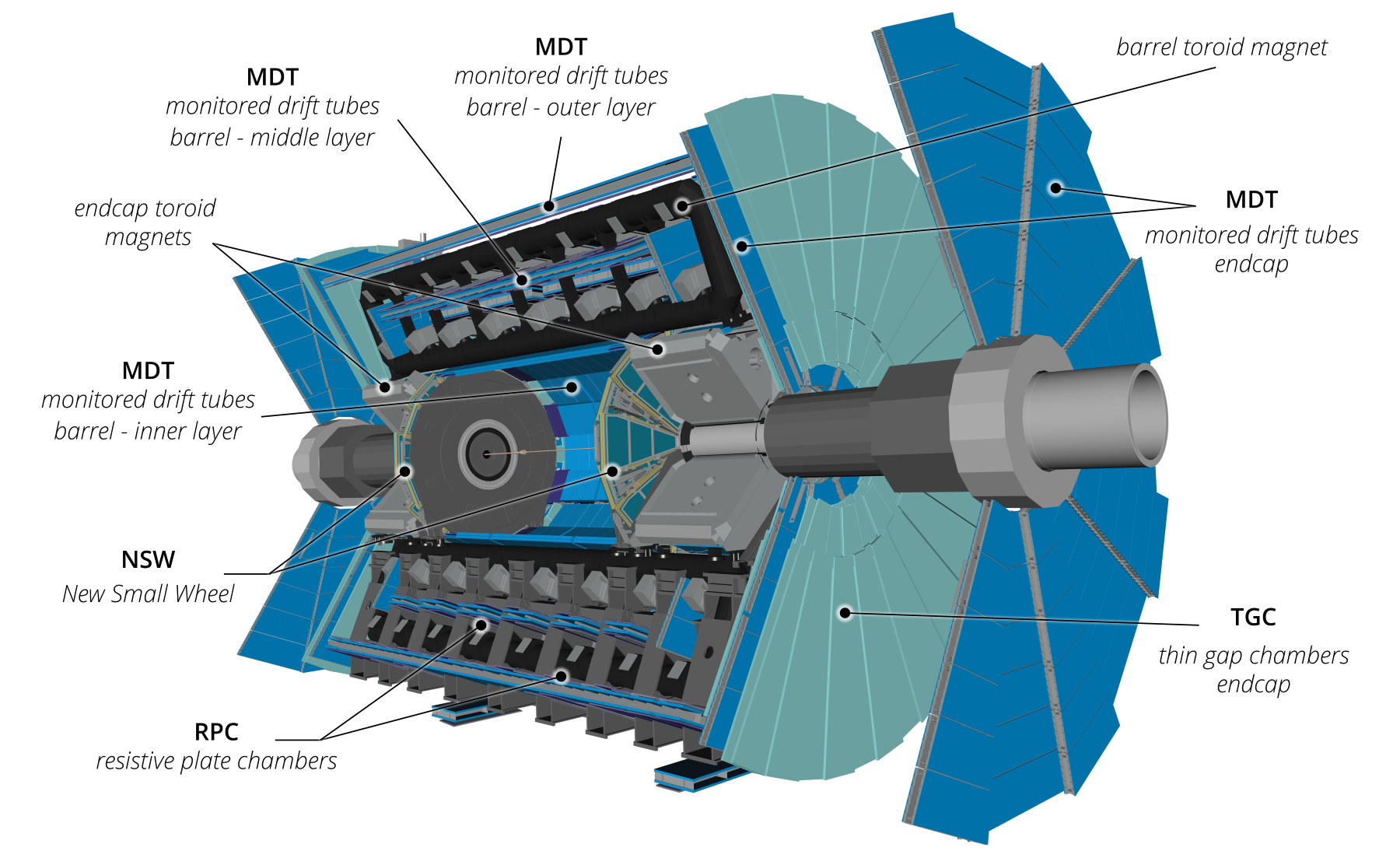
Figure 1: Overview of the ATLAS detector. This illustration shows how the muon detectors surround the outermost layer of the detector.
-
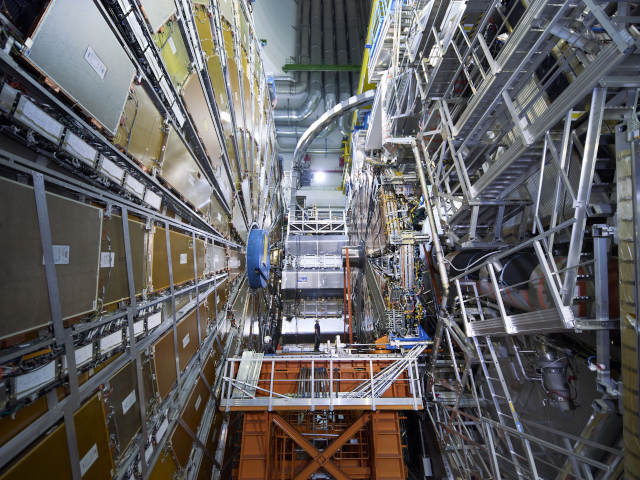
Figure 2: Photo taken during the LHC shutdown when the detector was opened. The TGC detector is visible on the left, the endcap toroid magnet in the center, and the NSW detector on the right. Source: https://cds.cern.ch/record/2775525
-

Figure 3: Schematic quarter cross-sectional view of the ATLAS detector, highlighting the positions of the TGC and NSW. By requiring that muons pass not only through the TGC but also through intermediate detectors such as the NSW etc., false signals (background events) can be effectively suppressed. Pseudorapidity (η) indicates the direction in which particles travel within this cross-section. The TGC covers the region of |η| > 1.05, and the NSW covers |η| > 1.3. The intermediate range of 1.05–1.3, which is not covered by the NSW, is complemented by other muon detectors and the Tile Calorimeter.
-
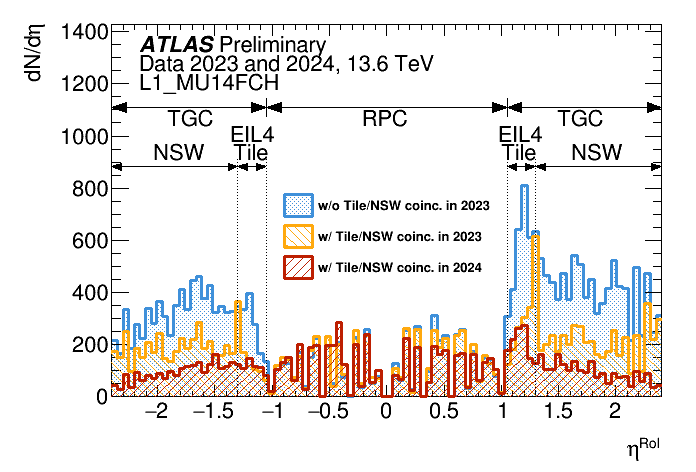
Figure 4: Comparison between early 2023 (without NSW, shown in blue), late 2023 (with about 70% NSW installed, shown in yellow), and 2024 (with full NSW coverage, shown in red), demonstrating significant suppression of false triggers by adding NSW signals.
Upon receiving the award, Dr. Aoki commented: “I am deeply honored to receive the ATLAS Outstanding Achievement Award. This project is the result of a challenging effort by multinational researchers working closely together to bring a new detector into full operation. This award is a testament to the cooperation and persistent efforts of all the researchers, engineers, and students involved. Moving forward, I am eager to continue contributing actively to the ATLAS experiment and to the progress of high-energy physics.”
-
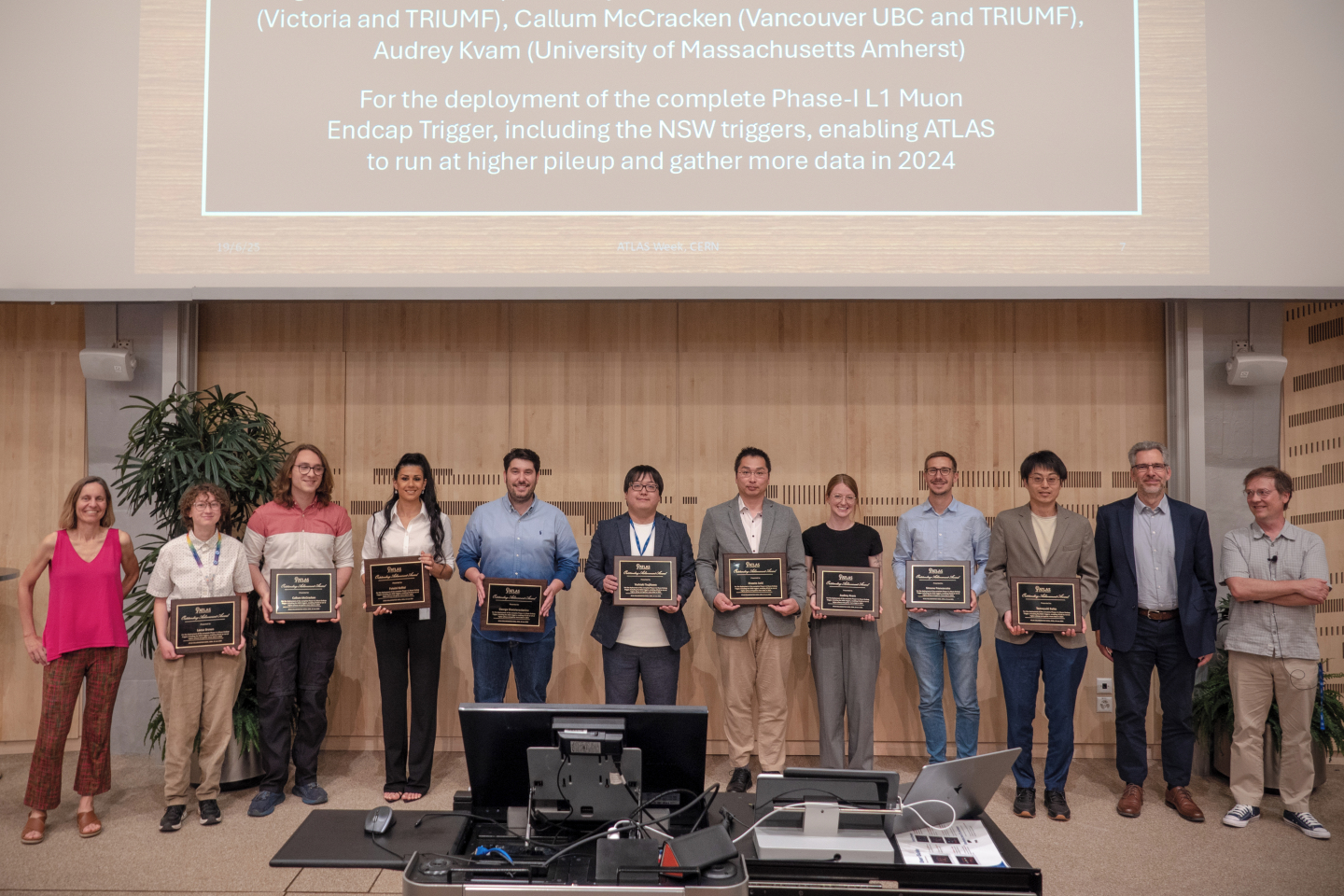
Photo from the ATLAS Outstanding Achievement Awards ceremony, held at CERN, 19 June 2025. © 2025 CERN
About the ATLAS Experiment
The ATLAS experiment is an international collaborative project conducted at CERN, near Geneva, Switzerland. Using the Large Hadron Collider (LHC), a 27-kilometer-circumference accelerator, and the gigantic ATLAS detector—approximately 25 meters in diameter and 45 meters long—the experiment aims to uncover the properties of the Higgs boson, which is deeply connected to the origin of mass in particles, as well as to search for unknown particles related to new physical laws.
The ATLAS Japan group, composed of 13 universities and research institutes, is leading efforts to upgrade the inner tracking detector and muon trigger detector circuits in preparation for the High-Luminosity LHC experiment, which will significantly increase the frequency of proton-proton collisions.

